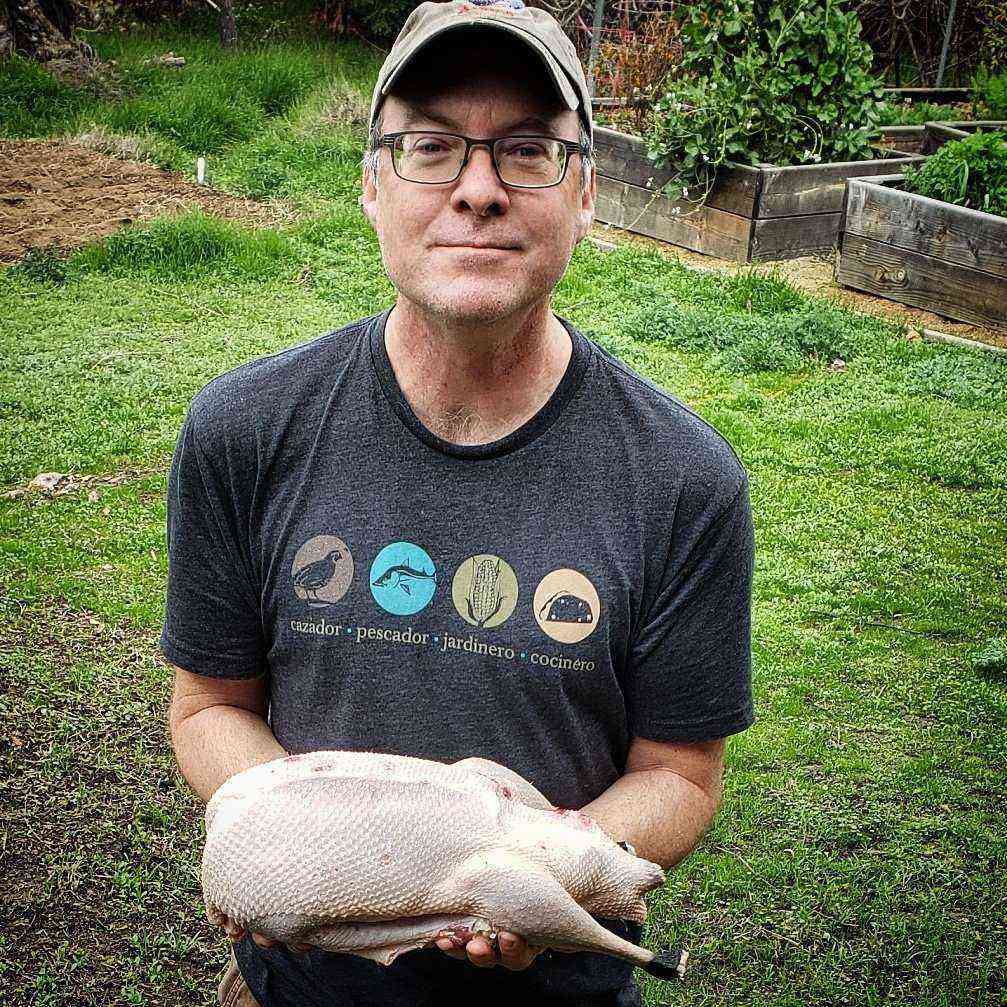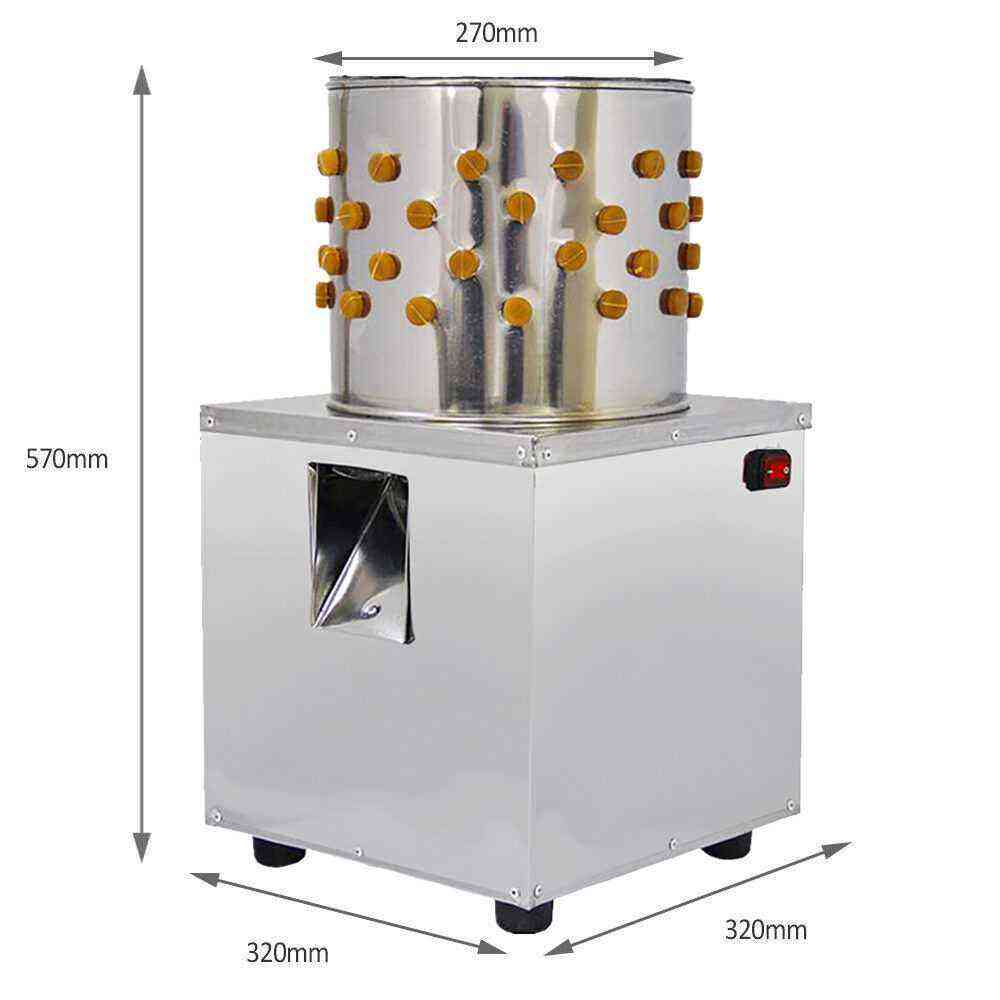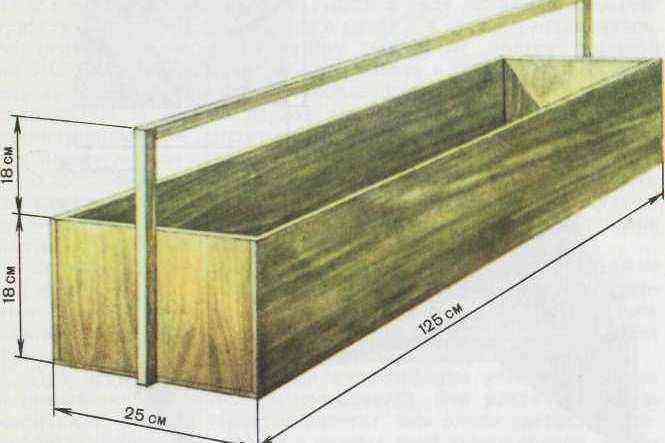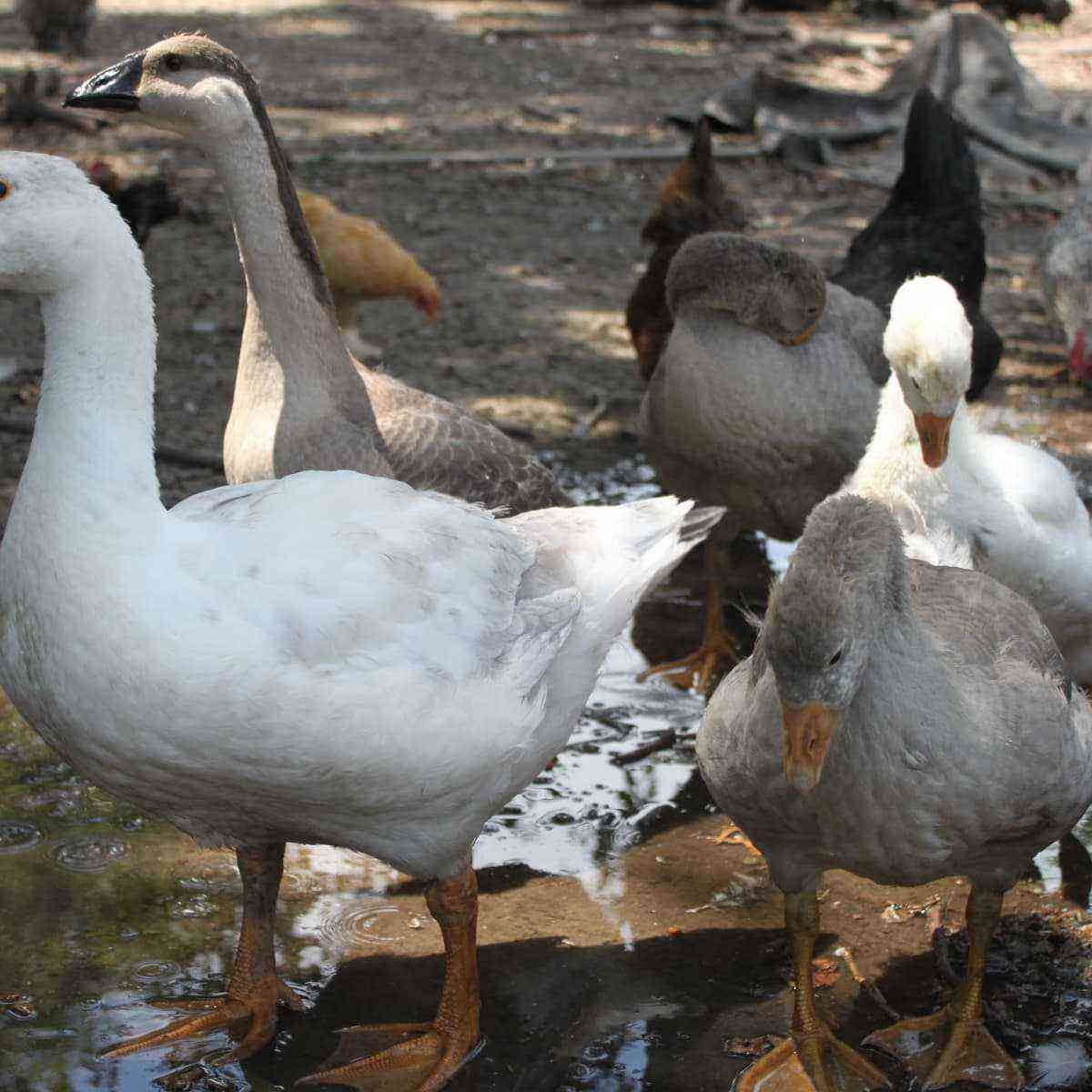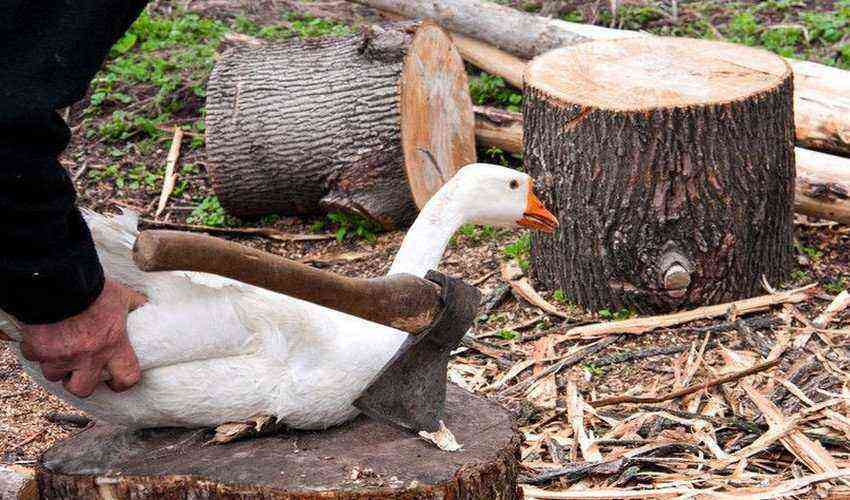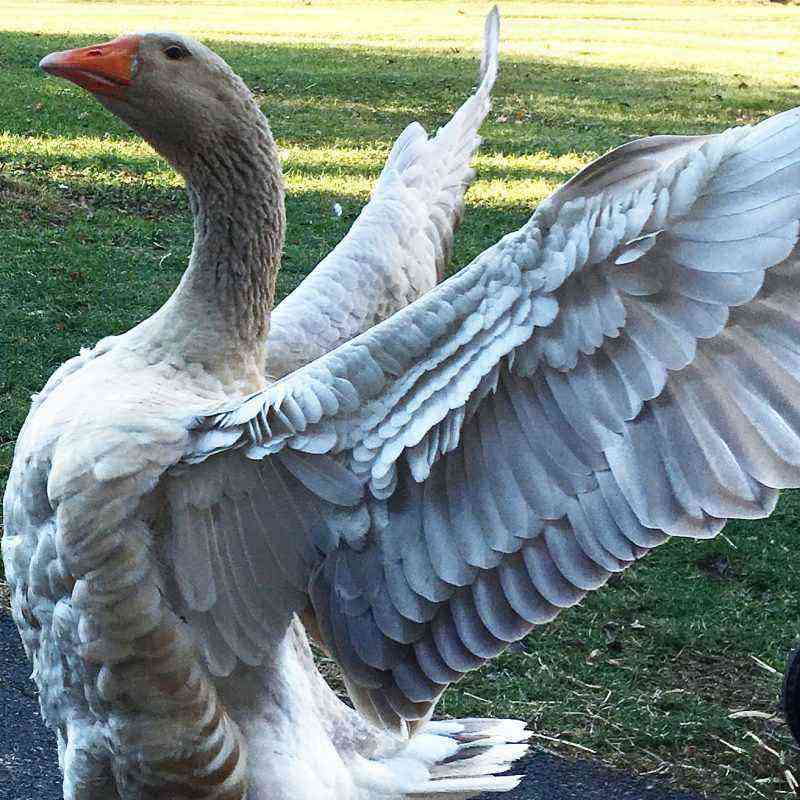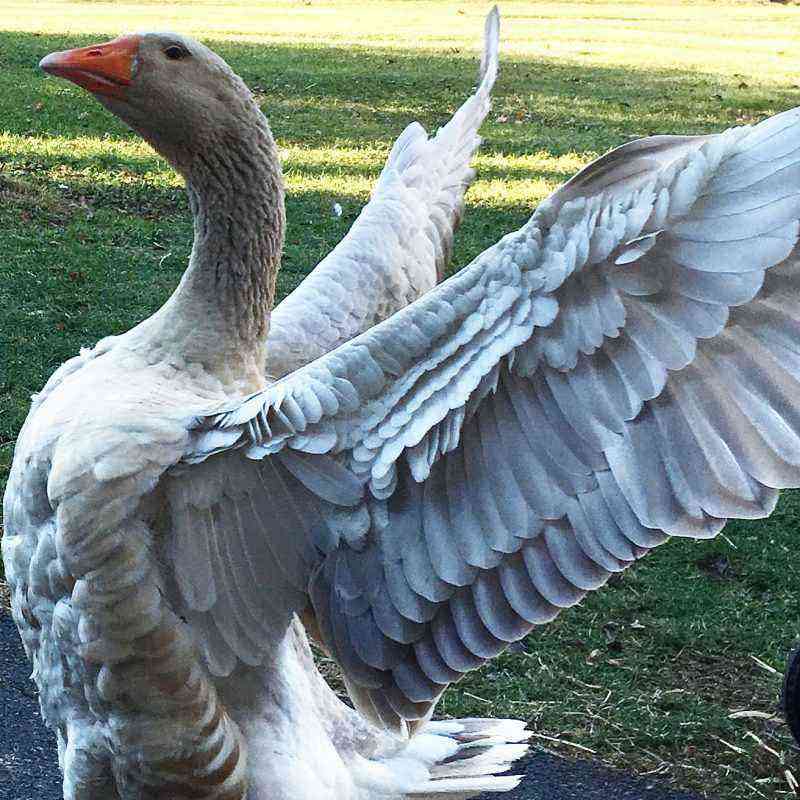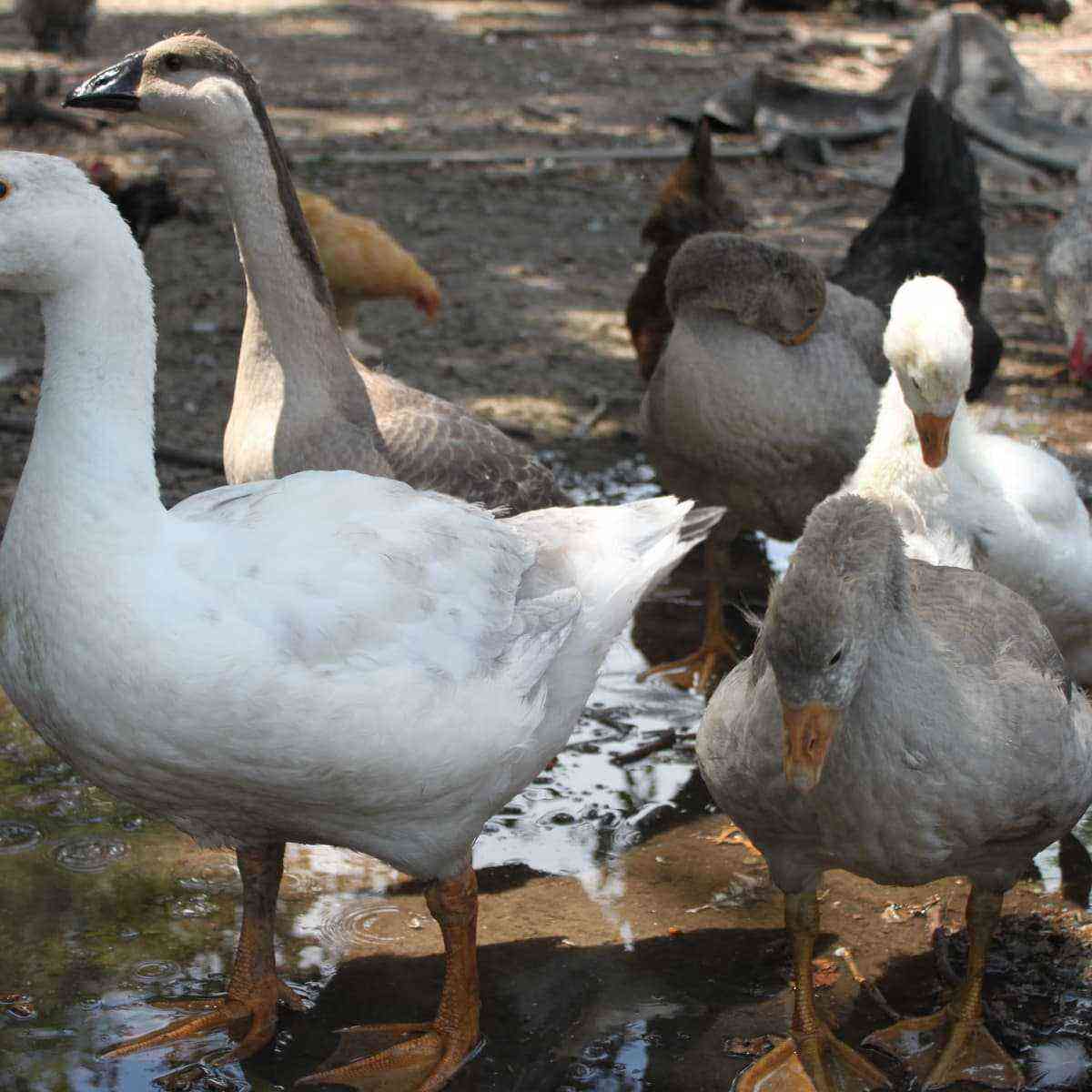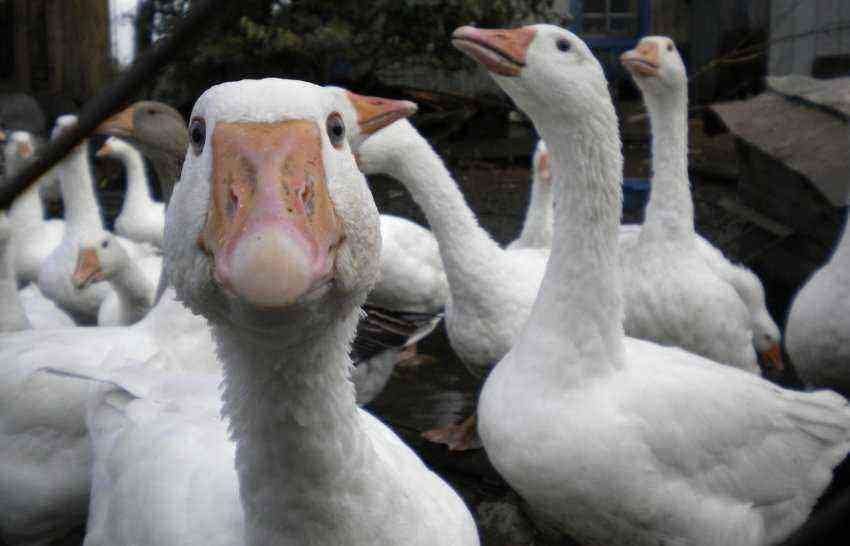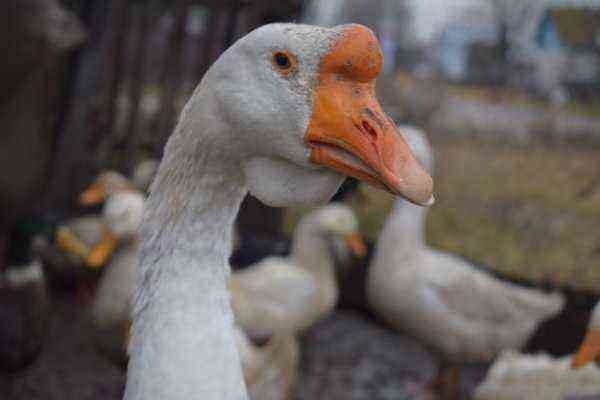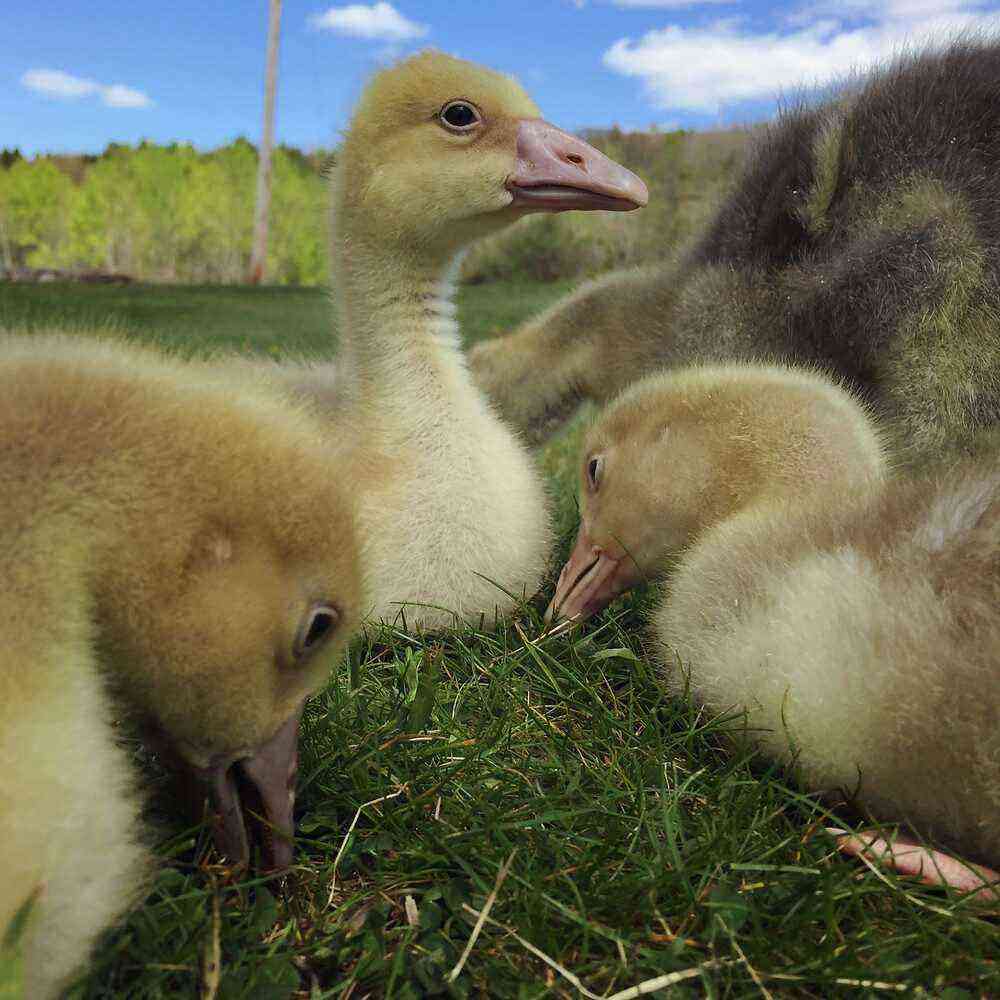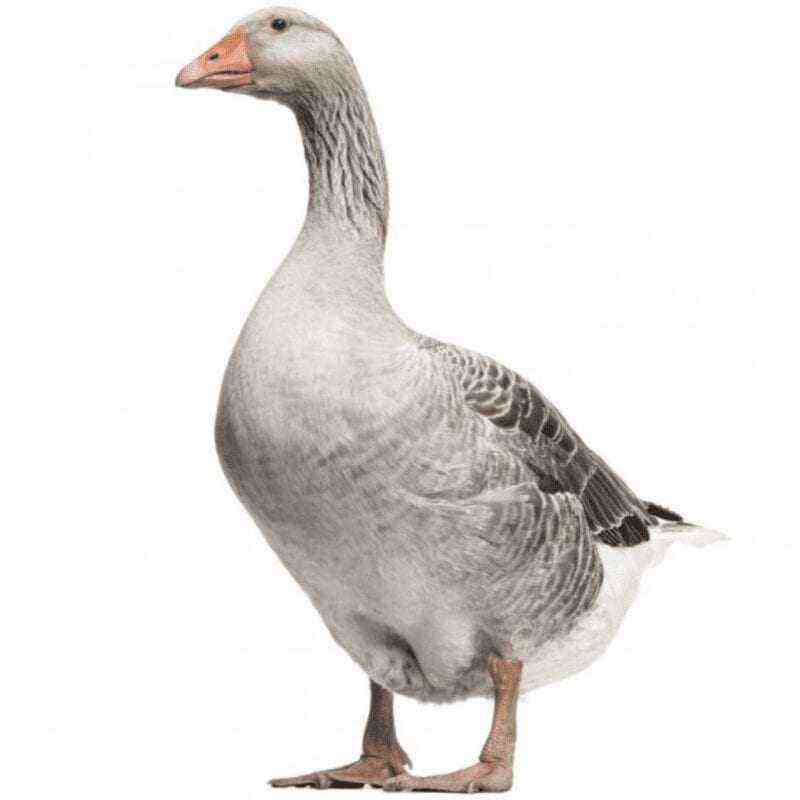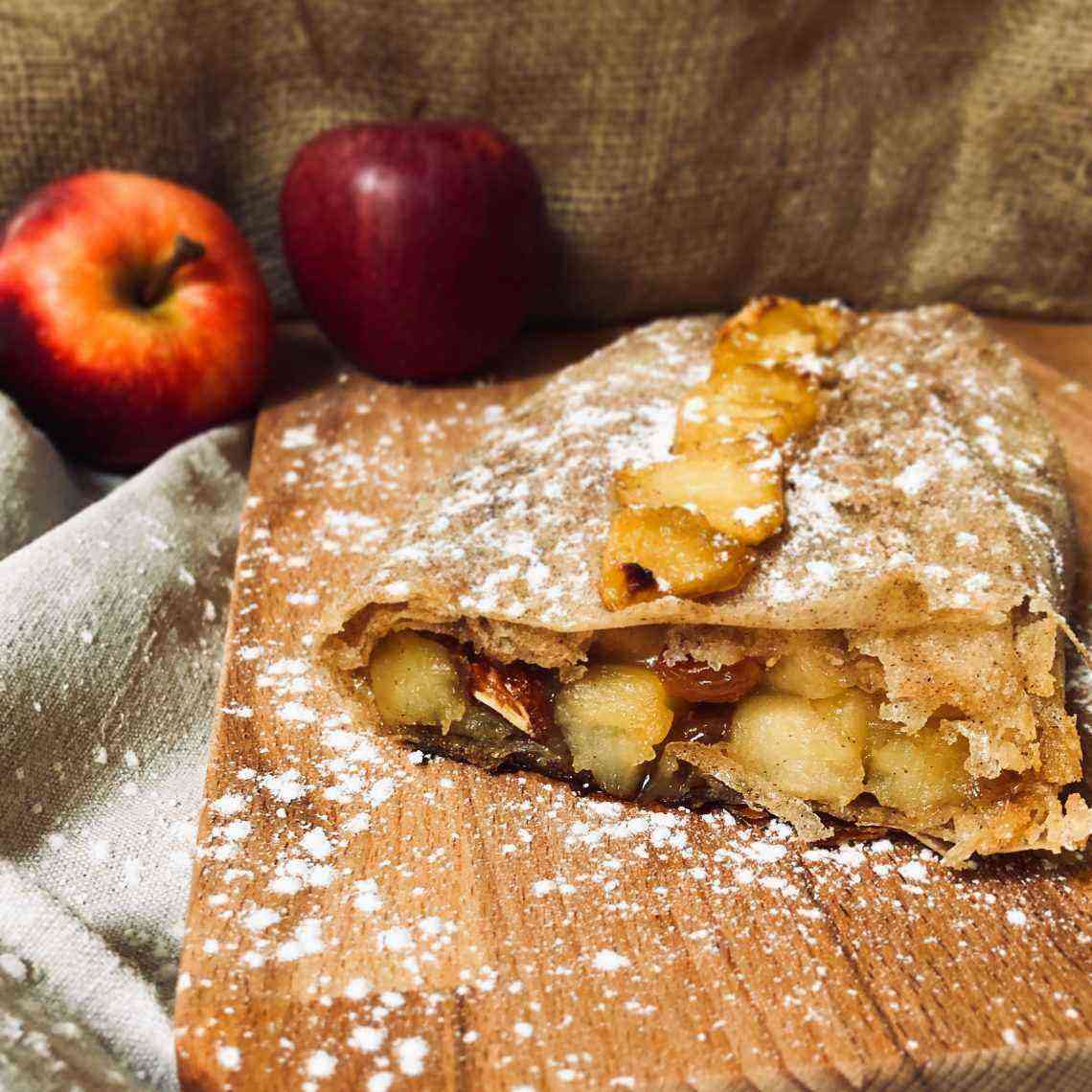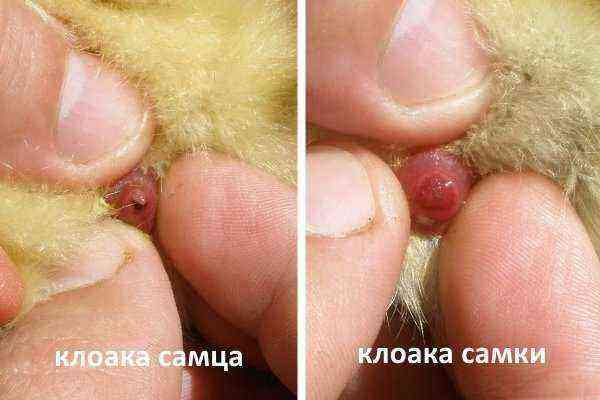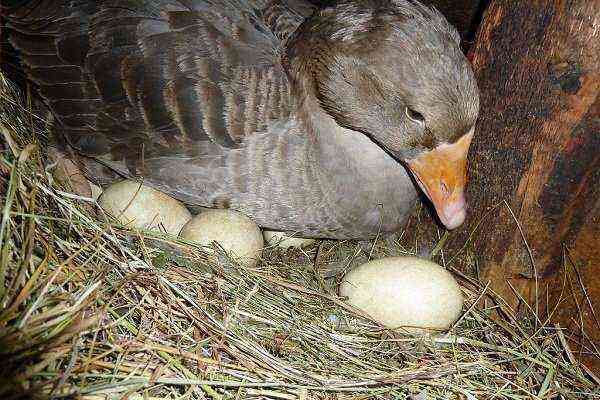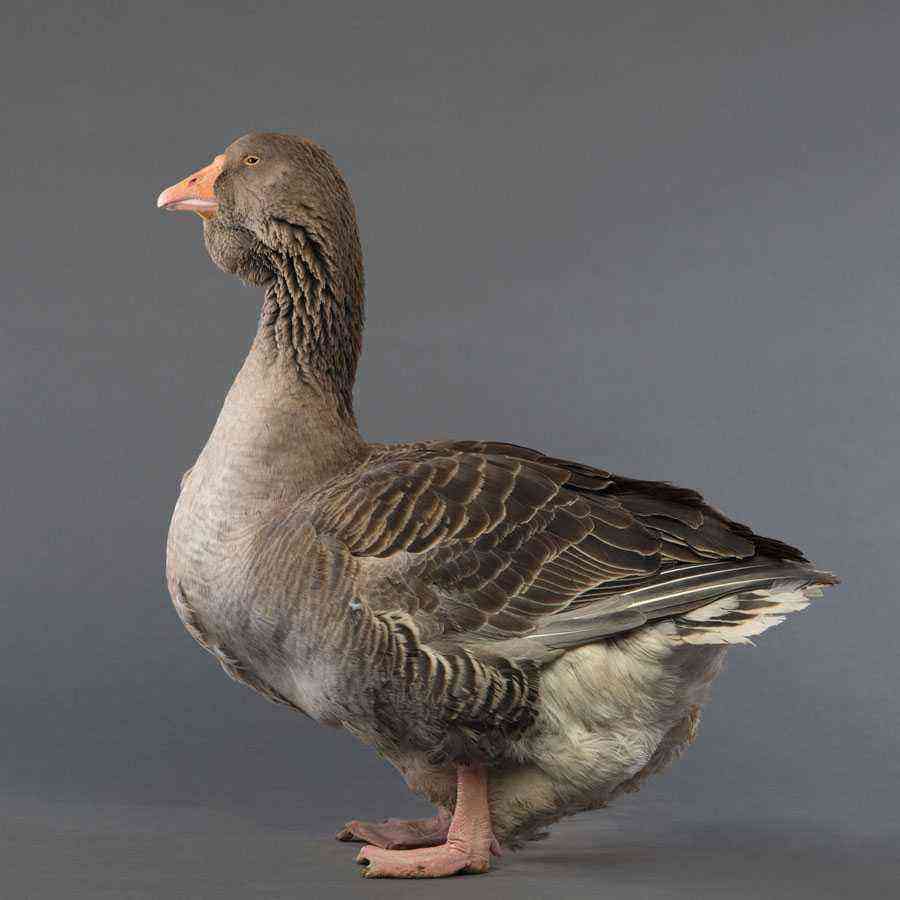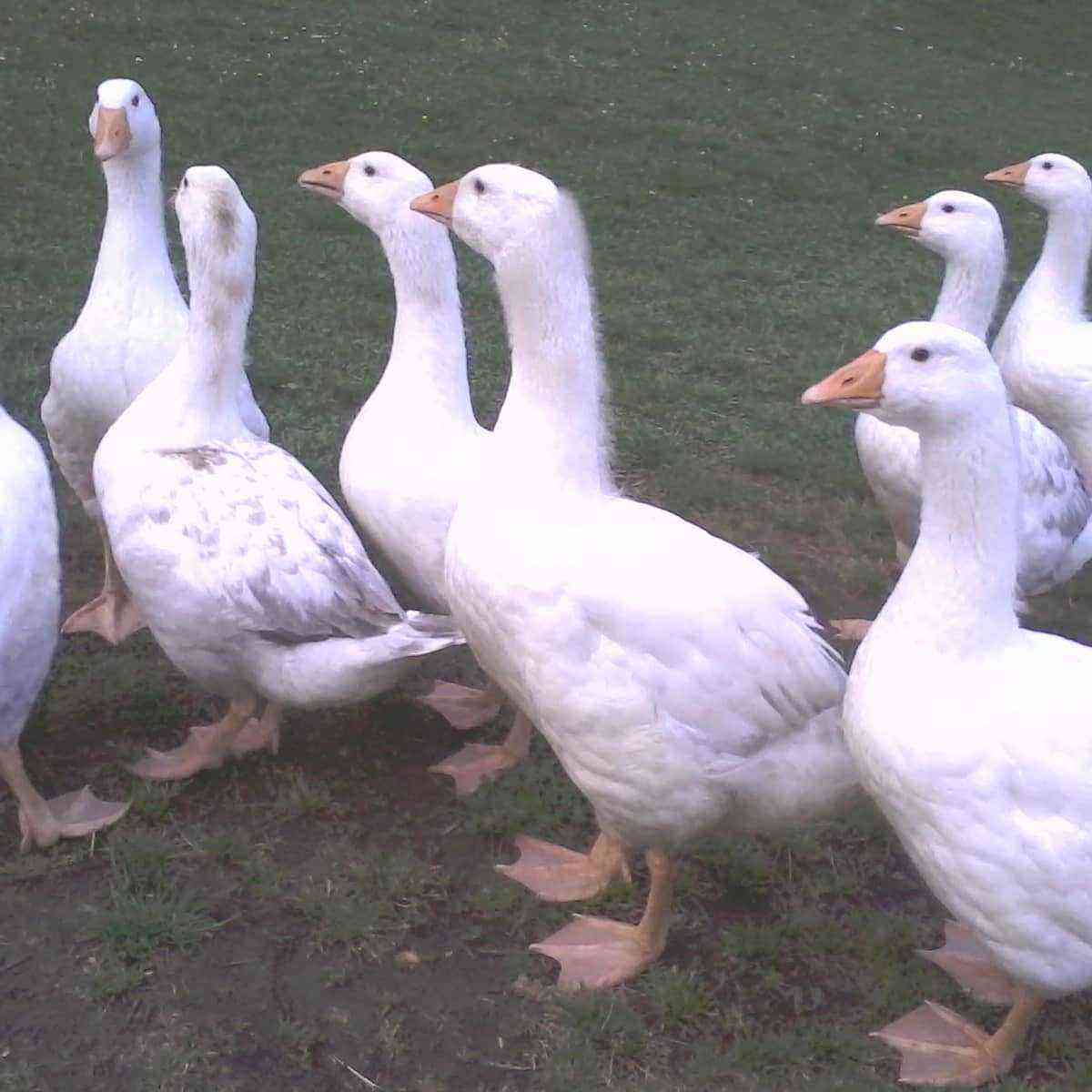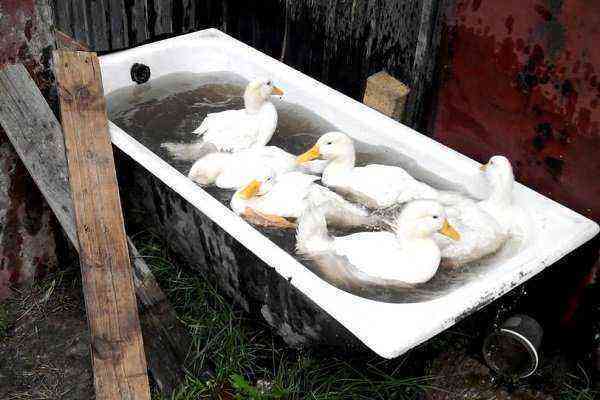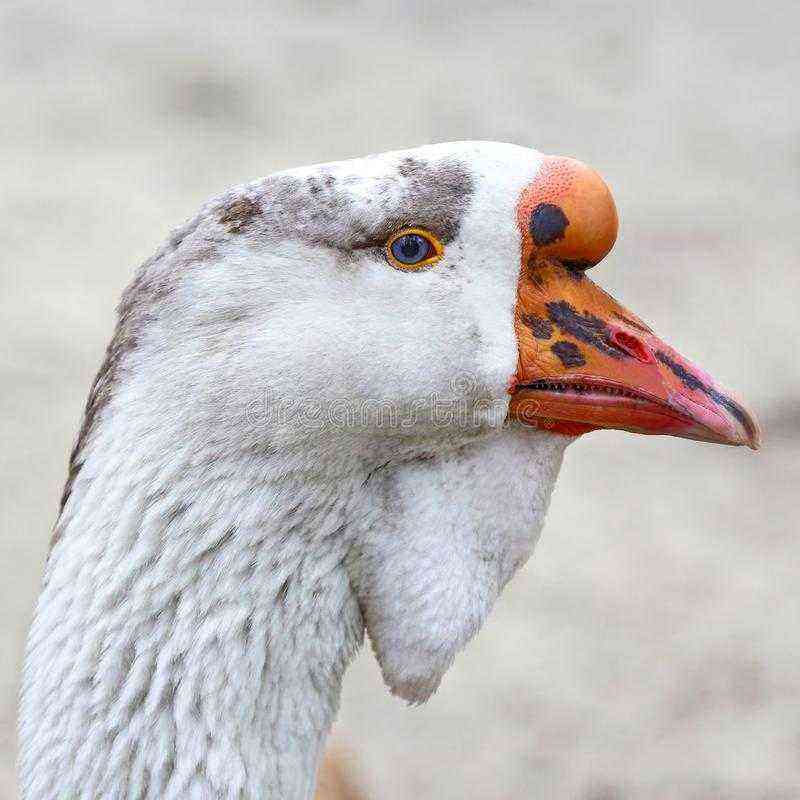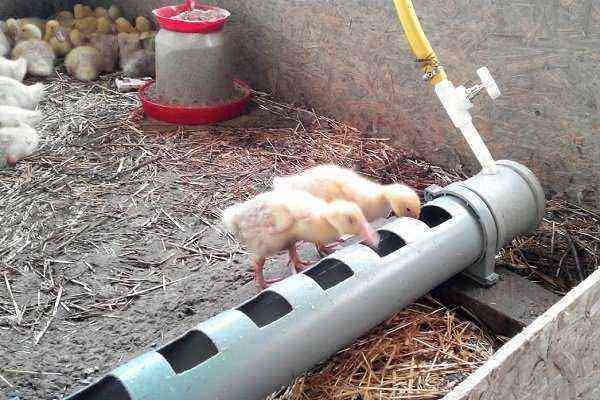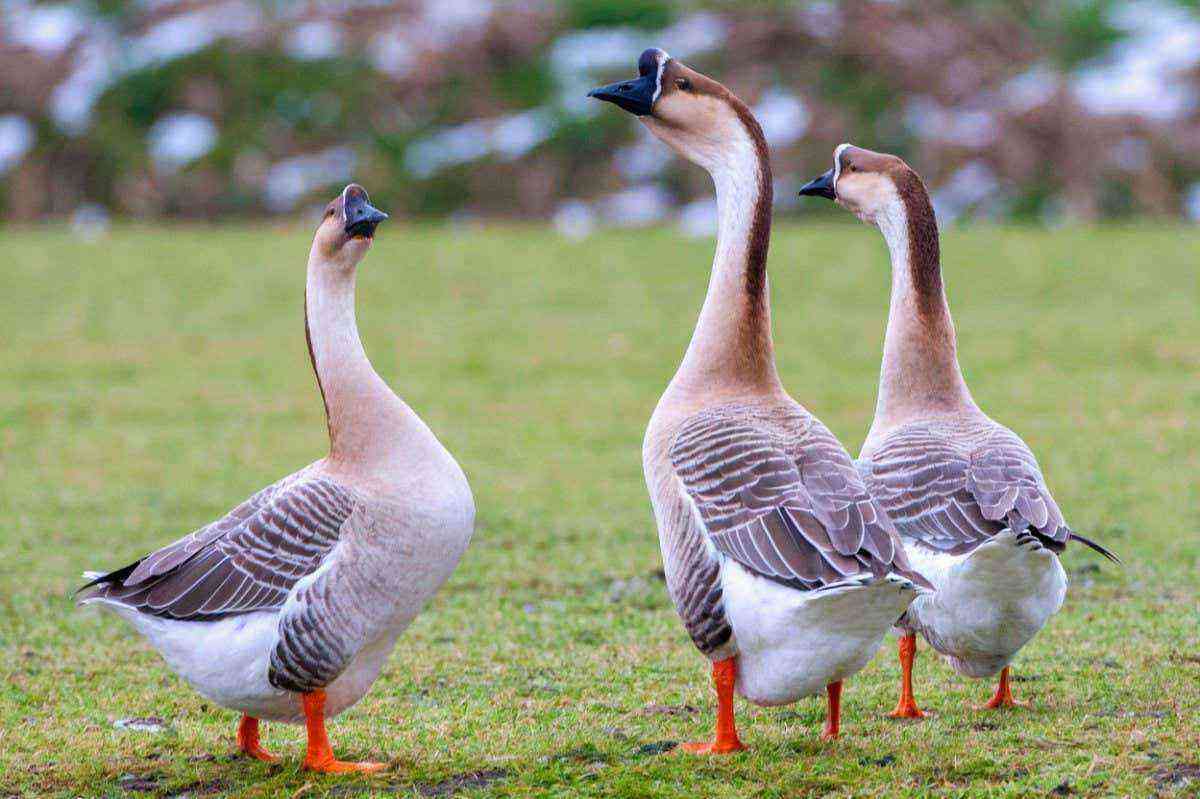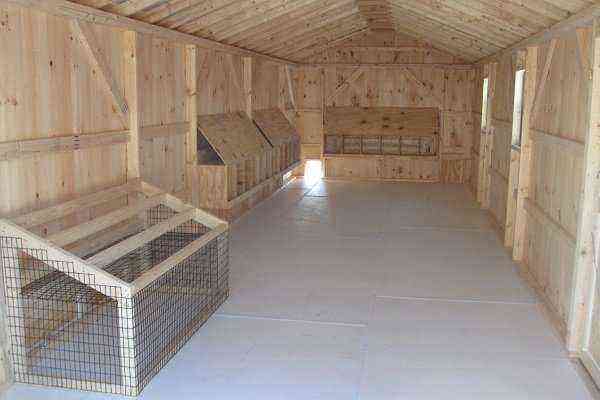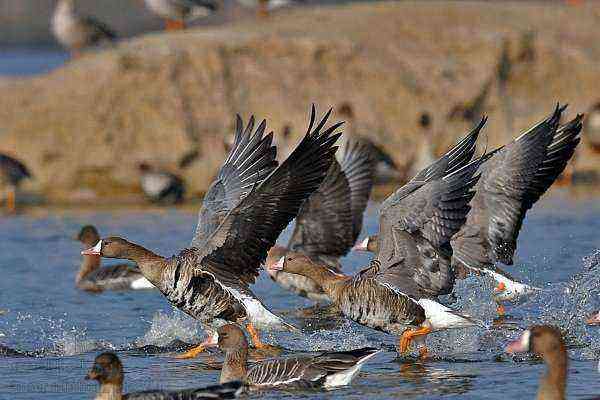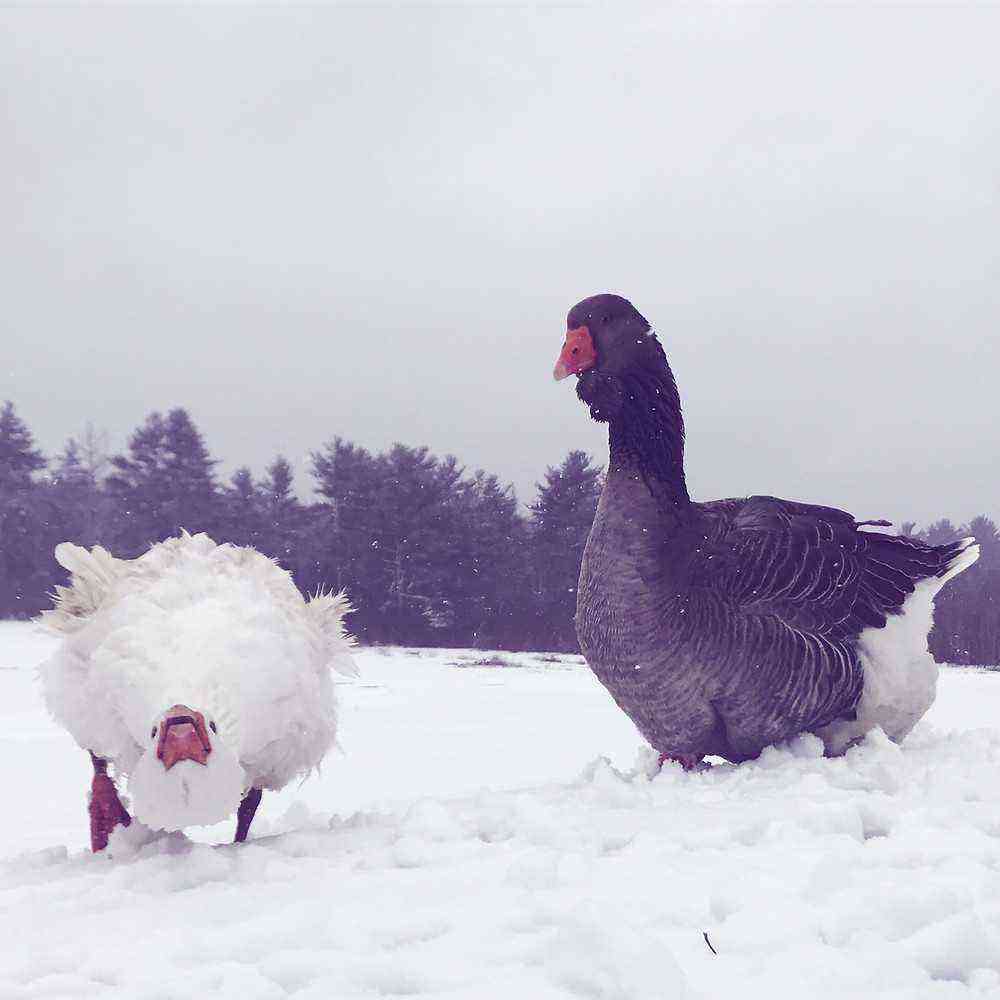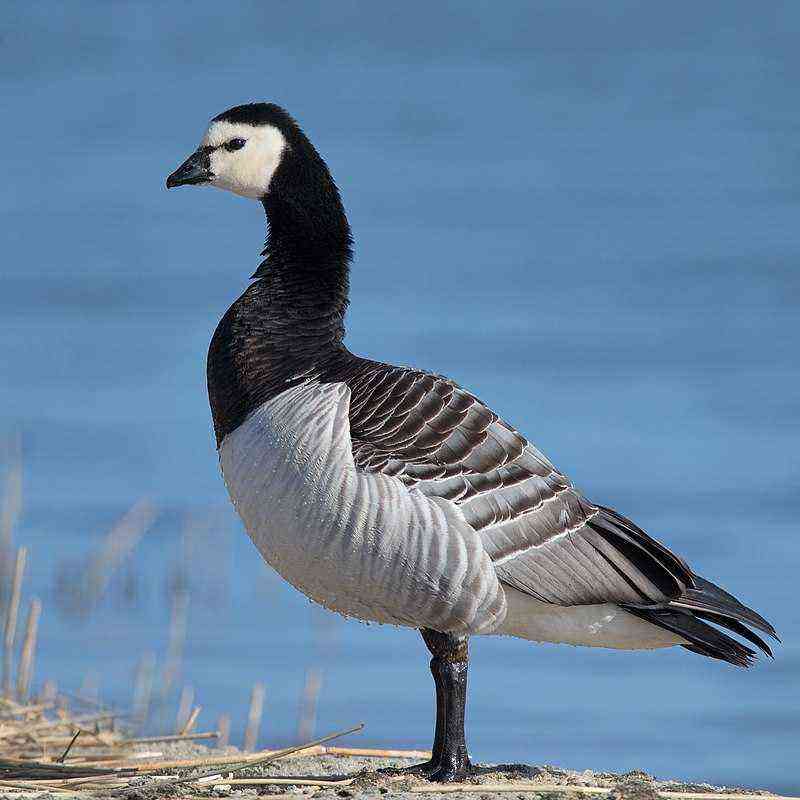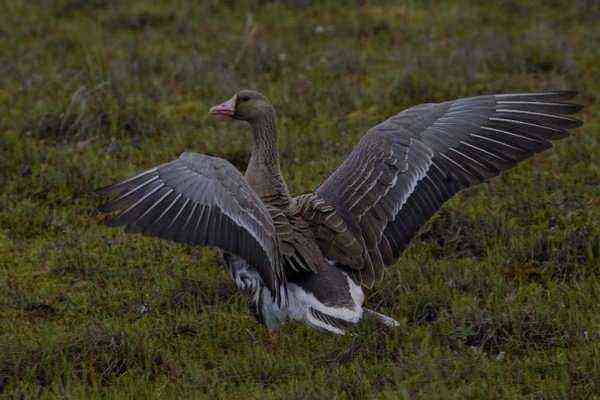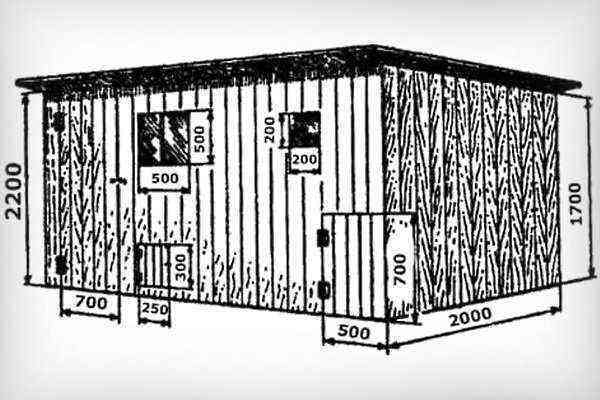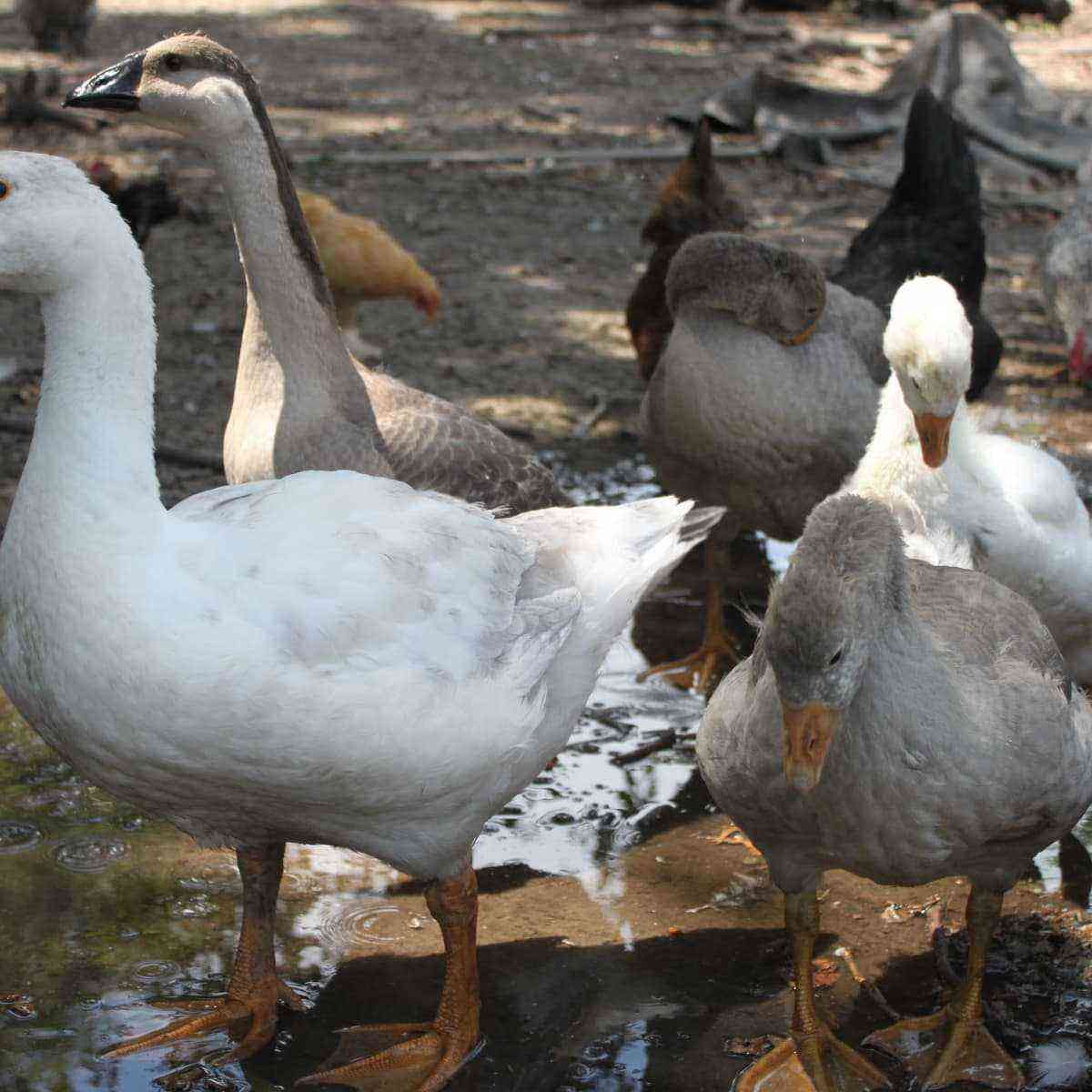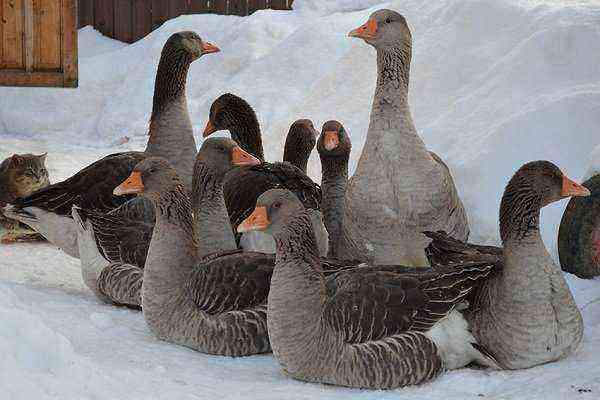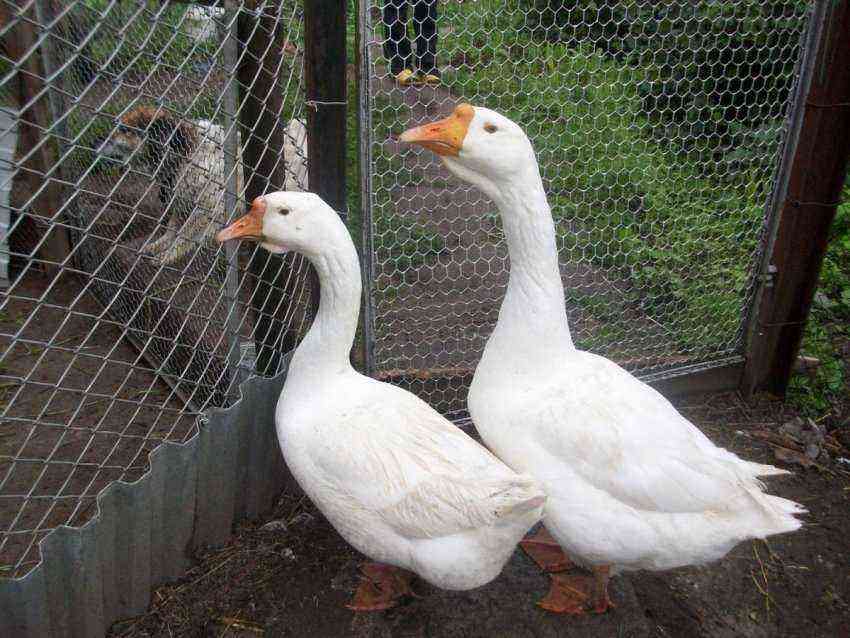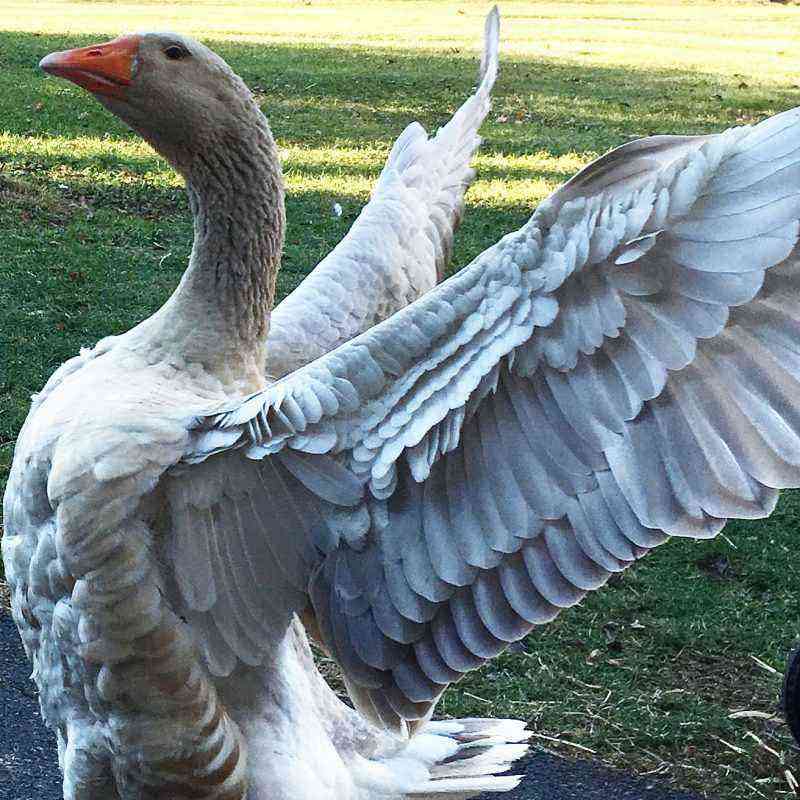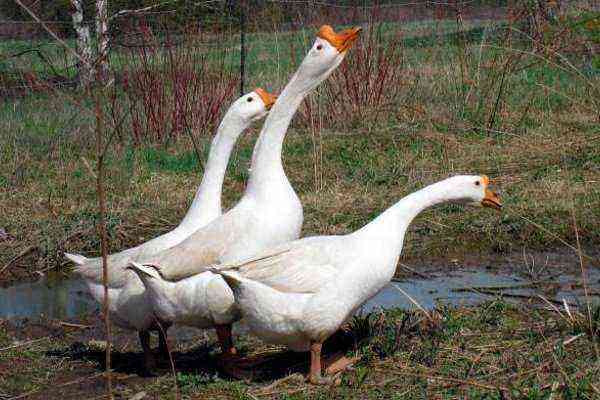Italian geese are graceful individuals, if you are interested in poultry farming, this article is for you. What is special about the appearance of the breed, how to maintain and provide proper care and how breeding takes place. You can answer these and other questions. You will be helped by reviews of real people.
The history of the emergence of geese of the Italian breed
The breed originates in the 19th century. Italian breeders had a lot of experience in their work, and their plans included the crossing of native birds, which were white, and geese brought from the Middle Kingdom.
When the Chinese breed was added to the breed, it was greatly improved, and from there the breed of Italian geese originated.
This country is not little known, and according to tradition, it is often visited. Tourists, geese were taken from Italy to neighboring countries – France and Austria. After people accepted them with open arms, geese spread throughout the world. Now they are firmly rooted in our land, they are bred on small plots of land, in huge poultry farms.
Breed description
Italian geese are the most common breed of geese. They are not decorated with anything, their coloring is not at all surprising, and the body does not highlight beautiful plumage – everything is standard. After you have imagined such a being, understand – this is the Italian goose.
Appearance
Below is a detailed description of the appearance of Italian geese.
As already mentioned, geese do not stand out in any way, but even this does not turn people away from them. Their torso, in proportion to the rest of the body, is slightly elongated and raised in front – in the stomach. The belly itself, by the way, is rounded, and has no fat folds. The wings are tightly pressed to the body, long and high. The tail is also pressed to the body, short, and almost imperceptible. Geese of this breed have powerful, strong paws.
The back is slightly arched, developed and behind – in the direction of the tail, slightly descends. From there, a not quite long, graceful neck advances. The head is of a standard type, only in geese sometimes it has a crest. The long, flat beak is light orange in color. It does not stand out for the characteristic bulges that distinguish geese by gender and breed. The eyes are usually dark blue, and the eyelids are orange.
The plumage is hard, and not too large layer, the downy layer is very small. The color is completely white, but sometimes there are gray feathers – this is considered a minus, albeit a minor one.
Any deviation from these characteristics is a defect and a defect.
They do not have an outstanding appearance, but still look attractive, for their grace and physique.
Character
Italian geese are very active – this explains the complete absence of fat folds, and a strong physique. They are also distinguished by complete independence from people and are real protectors of their family. Ganders are very kind to their family, trying with all their might to save it. They can easily quarrel with geese of other breeds. Most conflicts come from this.
This very aggressiveness of ganders is considered a disadvantage of the breed. With such conditions, it will not be possible to keep the two breeds close to each other.
Egg production
Geese show the ability to lay eggs closer to one year of age. Unlike other breeds, Italians have only one laying period. Although there are ways to make more periods, more eggs, the period is basically one.
In a year they lay up to 50-60 eggs, large (150 g), pure white, the same color as the color.
There are ways to arrange a second period, in the fall, but the goose will hatch eggs only in the spring. Therefore, for the second period you will need an incubator. With him, a goose can lay up to 90 eggs a year! 8-10 years – this is how long the good and successful egg production of the goose continues, and then some problems may appear.
The fertility of eggs is up to 75%. If they ripen in a good incubator – 100%.
Meat productivity
Geese are valued by farmers for their excellent qualities in weight gain and growth. You can get to know them below:
- Males up to 9 kg.
- Females up to 7 kg.
Usually, geese reach their final weight by 5-6 months, so purely economically, at this age they are sold. Marketable size is reached by 9 weeks of age.
The meat is very tasty, and in addition, it has many other qualities, such as fattening for fatty liver. The famous dish of foie gras comes out perfectly from the liver of Italian geese.
With the help of fattening, you can get no more than 600 g of liver. From the full weight of the goose, this is quite a bit. But remember that you can start fattening only from reaching 4,5 kg of goose weight, if you are using young animals, or just an adult goose.

Also, to get a larger carcass, geese are mated with heavyweight breeds. But this method is used very rarely, because the fertility is very small, and is in no way comparable with the level of Italian geese. But even so, the method is appreciated, and it is absolutely attributed to the merits of this breed.
Maintenance and care
Another of the positive qualities is complete unpretentiousness. Geese need only a prepared room, timely cleaning and vaccination against diseases.
Requirements for the room
The dimensions will require 1,5 square meters. m per person. You can add a little on top, because the geese are very active, and they may need a little more space. It is not advised to keep them next to other household birds, or with geese of a different breed. For example, Italian geese need high humidity. Not that they are needed, they love to splash in the water, that’s why the moisture. In general, they need complete isolation from other birds.
As for lighting, natural indoor light is enough for geese, they do not need highlights, such as chickens. If a window is installed in the room, then it should not exceed 15% of the floor area. It is clear that there should not be high brightness.
Also, there should be no drafts and wind in the room. The premises must be protected from pests, rodents and portable diseases. If, nevertheless, pests have already divorced in the room, be sure to carry out sanitary procedures.
The air should be humid – 70%. At the same time, the room should be ventilated frequently to remove harmful bacteria from the room.
The bedding in the room plays a hygienic role, cleaning the room from dirt, absorbing it into itself. The second role is insulating. In summer, it should be very small and needles would be the best option. In winter, more – 15 cm thick. A litter of peat or straw, always dry, will serve perfectly.
As for the temperature, the geese don’t care. Even if they live in the cold, even in the heat, it does not matter, they are not threatened with diseases from frost. But if you are going to feed the geese, keep the temperature at 10-15 degrees. It is in this interval that the geese will eat more food, as their appetite will be increased.
Yard for walking
Geese of the Italian breed need timely walking, and sitting indoors for a long time is not their nature. They are a great store, and huge streams of energy are always knocked out of their body.
Therefore, the yard should be large enough to accommodate all the livestock, with the expectation of their energetic movements.
Access to water
Geese of this breed can do well without a reservoir, they practically do not need it. This again proves their complete unpretentiousness. Reservoirs can only be used for washing, which will take place daily.
There is another reason why water is needed. Water has a buoyant property and the geese that swim in it gain lightness and a sense of freedom, which helps them a lot before mating. Geese also moisten their eggs in it before disembarking.
The ratio of geese to water is precisely equated to the pluses of the breed, not everyone has a reservoir on the site. This greatly simplifies the content.
Feeders
Feeders fit the most common and standard, oblong shape, in the form of a rectangle. It is not necessary to spend money on something expensive, because it is not difficult to make it yourself by nailing a couple of boards to each other. Drinkers will look similar. Just use quality boards for this and never use infected ones.
Preventive vaccinations
Geese are vaccinated against various diseases at the age of 4-6 days, as well as 10. Yes, vaccination takes place once, and at an early age, to ensure health. At a younger age, they will save, because then the immune system is subject to attacks and is very weak. And the procedures will not allow adult geese to become infected with the same diseases that disturb young animals.
Do not use the vaccine if the goose is already unhealthy, because the vaccine is a virus with a weak effect. If the body is already sick, then there will be almost no ways for treatment. In most ways, they act completely inhumane – they beat them with sticks and burn the carcasses, carefully destroying all viral remnants.
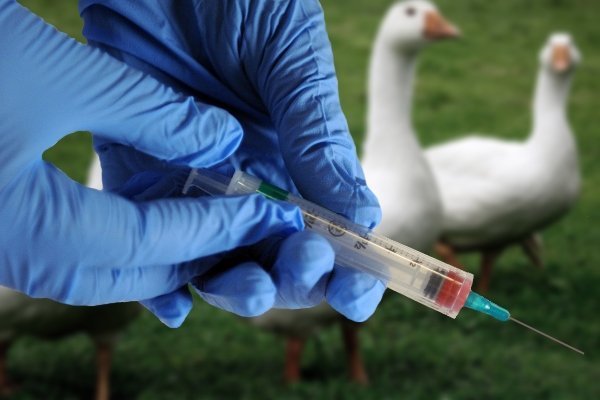
Vaccination should only be carried out by a specialist. When the procedure has been carried out on the entire livestock, they are almost in no danger and the temporary danger has been eliminated.
Feeding
Goose nutrition consists of a very special diet system. There are even several of them. Below we want to describe the features of this very food, its composition, tips and much more on this topic.
Goose diet
Goose nutrition is exactly the same as that of young animals, adults. Italian geese are unpretentious in many ways, as well as in nutrition. From the owner, they do not require much. Vegetables, minerals, animal products, nutritious foods and greens. All this makes up the diet of the bird.
Only during oviposition can there be exceptions. Then, the goose needs more vitamins and nutrients in order to reproduce high-quality offspring. You can use more greens and a little more chalk – it also contains minerals. During this same period, the goose is inactive and, on several occasions, will consume less food.
Diet for meat
Naturally, to get more meat, you have to feed the geese more. And also despite the fact that they are hyperactive, they need food many times more. There is a method called fatty liver fattening. It is used just to get a delicacy in great weight. So, for example, for 7 kg of goose there are 600 g of liver.
We’ll have to disappoint, because this method is not at all acceptable for geese of the Italian breed, so let’s consider others.
Fresh and clean water should always be present in the diet, this is also part of it. You can see the most balanced food list below:
- Fresh seaweed, grass and greens.
- The remains of vegetables, root crops, vegetable tops.
- Balanced feed (dry, wet).
- Chalk as an additive.
- Cereal crops (rice, corn, oats).
- Bran.
It is also possible, and even necessary, to add eggs and other products of animal origin to the diet. Dairy products also have a place to be. Do not forget that geese should always have unlimited access to drinking water.
As for herbs, ordinary green ones, you don’t have to give them to the goose when your whole yard is littered with it. When it is needed, the animal itself will get the right portion.
The diet of young animals
In general, farmers begin to overwhelm the chick with food immediately after hatching. This is a mistake, and in any case, do not repeat it. After birth, a certain amount of nutrients remained in the stomach of the chick, which will provide it for a while. Additional food will become a burden for him. Therefore, postpone the first meal for 8-9 hours.
Feeding passes with the flow of the age of the chick, and after that the goose. By smooth standards, it is suitable for the usual diet of adults. The diet will include:
- Bran.
- Dry animal feed.
- Corn.
- Dairy.
- Carrot.
With each week, the amount of food will approximately double until it reaches 60 days. Then you should start adding adult food to the diet. After these days, reduce protein and fat foods, because at that time, the chick will gain its mass, and the rest of the food taken will go into fat. And this definitely will not affect the carcass qualitatively.
More about feeding goslings is written in the next article.
Breeding
Subject to all breeding rules, as well as some help for this, the survival rate of offspring can be the highest – 100%. Geese of the Italian breed are among the strongest breeds.
Temperature and humidity in the incubator
You will need eggs that are no more than a week old, a maximum of 10 days. Select from them the highest quality, not dirty, without cracks and other damage. Carefully clean it and place it in an incubator where you will have to set the desired temperature.
The incubation period lasts a month, and because of this, you will need to change the temperature several times. At some time it is needed lower, and at some time it is needed higher. This is the rules that will greatly increase survival.

In the first 16 days, the temperature will be approximately 38 degrees (at the same time, turn off the flip mode). In the remaining time, after 16 days, the eggs must be cooled and slightly sprayed with warm water, leaving an open hole (door) for 10 minutes. Over time, you can leave open up to 20.
Formation of the breeding stock
If you are interested in obtaining eggs, you need to collect breeding stock. How to do it?
3 geese fall on a gander, and make up a relationship once, and for the rest of your life. To do this, you should choose the best geese. Those that are already ripe, who contain a lot of meat in their bodies and whose health is on top. Bullies are excluded from the list, because they will not go for copulation in any way.
When keeping a breeding stock, all the same rules are taken into account under which a livable room is created. Unless you need some lighting.
Care of young animals
Immediately after birth, let the gosling dry and do not touch it until then. After 8 hours, the first portion of food is given. Below you can find step-by-step instructions for a certain period of care:
- After 1 day, it will be easy to calculate the number of females and males in the flock. This is very useful, because then it will become much more difficult. In males, in addition to the pronounced yellow color of the down, there will also be a yellow spot on the back. Females, on the other hand, are mostly grayish in color and have no yellow spots on their backs.
- The chicks are placed in a cardboard box, from below laid with compacted soft hay, a few centimeters thick. You can only keep 15 chicks per 1 sq. m, no more, they can not get along together. They should always be under a brooder lamp. Observe the temperature regime – in the first week up to 32 degrees, and after, until the 20th day, it is gradually lowered to 18 degrees.
- For 15 days, the lamp does not turn off, and the room temperature is subject to standards. Meals are taken 8 times a day, you can read its composition above.
- During the periods of care for young animals, various vaccinations are also carried out. One of the main ones is the salmonellosis vaccine, which is carried out on the 4th day after hatching. In the third week, you can provide the family with protection against enteritis, cholera. But remember that vaccination is carried out only under the supervision of a specialist. Or under his influence.
Advantages and disadvantages
Before summing up, it is worth summing up the information that was submitted above, and still comprehend what are the advantages of Italian geese? And what are their shortcomings?
Among the advantages:
- The percentage of fertility, ease and efficiency in the incubation period and, of course, excellent survival of young animals.
- The ability to mate the female with other breeds of geese for a larger and well-fed carcass.
- Rapid weight gain.
- High quality meat.
- High quality down.
- Unpretentiousness.
- Oviposition.
- Not obligatory presence of a reservoir near the house.
- Attractiveness and beauty in appearance.
If you look at the list of advantages and compare it with the disadvantages, you can easily understand that the advantages exceed. Cons below:
- A rather weak effect of the survival instinct in geese.
- Aggressiveness of ganders in relation to geese of other breeds. Their character is in no way compatible with cohabitation with other breeds, as well as birds.
After reading two lists, it is easy to draw a conclusion about the Italian geese.
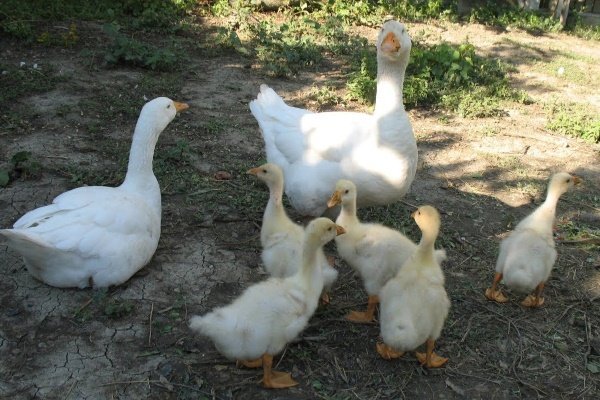
Reviews about Italian geese
Read a few testimonials from real people about the breed in order to finally familiarize yourself with the breed.
Larisa, 60 years old, poultry farmer, Elektrogorsk, hello, a few years ago, on a very successful occasion, as I understand it now, I was able to buy a pair of Italian geese, and just fell in love with them! All in one rumor say that it is necessary to take the Kholmogory, but I assert with confidence that mine are no worse, and maybe even better. With them, and beauty and become. The best feeling. Marina, 44, farmer, Lesozavodsk, I have been looking for geese for my yard for a long time. So that they are small, white, and the carcass is easily placed in the oven, tasty meat and excellent egg production. In the spring, my search ended, and I was able to purchase 10 Italian goslings. What can I say, they definitely did not disappoint me, they pleased me. Now all have survived, grew rapidly and did not get sick. Mine are very calm and peaceful, or maybe it seems so to me after past breeds. It seems to me that this is a very optimal option for breeding.
Now that you know almost everything about the Italian geese, it’s time to sum up. The breed is very high quality in content, productivity. Geese are very unpretentious, and do not require high costs. Egg production is amazing, as it can reach 100%. The young growth perfectly survives, remains. And according to their precocity and weight gain, there is nothing to say – a miracle.
